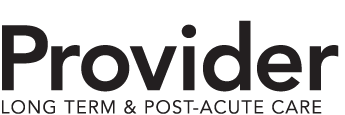
By Marc Pfefferle and Jeffrey Pielusko
July 29, 2019
The past few years have seen a record level of health care facility bankruptcy filings, and if the first half of the year has shown anything, it is that this trend is far from over. Ever-evolving challenges around demographics, reimbursement, staffing, and operating costs present enormous challenges for nursing centers and assisted living communities.
With pressures mounting, both distressed and currently operational facilities need to consider tactics to improve revenue and efficiency. Having worked with dozens of health care businesses facing these common pressures, there are clear avenues for facilities big and small.
Renegotiate Real Estate and Operational Costs
Rent is a significant cost for many nursing facility operators, and it is often set at a point in time when the organization enjoyed a higher valuation. This makes it ripe for renegotiation and represents what is perhaps the most immediate way to relieve financial stress on a nursing center.
While it is true that no landlord will want to lower costs off the bat, often times most are amenable, understanding that reduced rent is still income. Even within the larger operating company/property company financial structures, most of the time rental or property leasing costs can be amended relatively quickly.
Besides property costs, it is important to seek out other areas where savings can be realized without compromising quality, such as food vendor, pharmacy, or service contracts. This effort can positively impact the bottom line. Perform assessments of the business to identify areas of operations that could be improved, evaluate the return on overhead expenses, and collect overdue accounts receivable in a disciplined way.
Code for Revenue Enhancement
Regulatory scrutiny of nursing centers has increased dramatically both to ensure proper billing as well as satisfactory patient care. Facilities are exposed to multiple audits of their patient care techniques and billing procedures, and when issues are uncovered, the penalties and required remedies can be taxing and expensive to implement.
Staffing levels and direct patient care hours are among the most highly scrutinized details, so some nursing center operators who cut corners here do so at their peril—it is an expense that must be borne.
Regulation around the minimum direct hours for patient care, including certified nurse assistant (CNA) hours, places additional pressure on the cost model by removing some of the decision-making autonomy management staff would otherwise have on labor costs. This aspect is particularly challenging because clinical staff in nursing centers—and in particular CNAs—typically have high turnover due to low pay for the performance of a very difficult job, both mentally and physically.
One way to alleviate these pressures is to place emphasis on recording and billing for all services rendered, and to implement best practices in doing so. Develop proper coding protocols to maximize realizable reimbursement rates so that that the facility is paid for all provided services, even when operating in a reduced rate environment.
When rising labor costs are already a concern, it might seem counterintuitive to add extra coders to drill down into the details of recording and billing. However, in the long run, effectively managing the nitty-gritty details will make audits a much less stressful time for all involved.
Market to the Right Audiences
Compared to residents that previously entered nursing centers in moderate to good health, the average entrant today is older and sicker. At the same time, hospital systems are increasingly referring patients within their own networks, and preferred provider networks are referring to fewer nursing centers. This all adds up to higher cost of care per resident.
As the center faces these increased costs, it can be tempting to focus all energy on private payers, who are attractive admissions due to their higher reimbursement rates. However, today’s high deductibles and heavy patient responsibility have decreased the market presence of private payers. The Centers for Medicare & Medicaid Services (CMS), on the other hand, may have lower rates of reimbursement but offer a growing pool of potential patients backed by a payer that is guaranteed to pay its bills. As long as a reasonable payer mix among residents can be maintained, accepting more Medicaid patients can be a sustainable way to fill beds.
With both types of patients in mind, operators need to focus proactively on referrals from hospital systems, assisted living facilities, and preferred provider networks. Mandates vary from state to state, but most assisted living facilities are required to discharge patients when their care requires more than a one to one patient to professional ratio.
At the same time, it is important to examine how to cost-effectively reach and educate discharge planners at other health care facilities and agencies, as well as families and other decision influencers. It can be hard to consider investments in marketing when facing financial strains, but spending smartly on radio, newspaper, or digital advertising can pay dividends in driving new inquiries. Examine the competition’s pain points and market the facility as an alternative solution.
In addition to referral-focused outreach, it is important to reach the wider community to raise awareness of services with a positive message about the facility. Patients today have access to extensive research and reviews when making choices about long term care, so it is imperative to improve the facility’s CMS Five-Star Rating. The evaluation process is a bit long—one year—but investing in care levels to enhance quality of care and quality of life for all patients and residents will also help ensure a good Five-Star Rating, which is a must to secure future organic inbound traction.
Some of these tactics can be led by operations, marketing, finance, or legal teams. Those providers that are more complex and are further along in the distress cycle may require outside expertise to lay out options and viable paths forward. In the end, doing what is best for the health and well-being of residents and patients often proves to be the most beneficial for the facility in the long run as well.
Marc Pfefferle, partner at Carl Marks Advisors, has more than 30 years of financial and operational restructuring experience. He serves in roles as senior advisor or interim executive to companies in transition or in need of substantial performance improvement or debt restructuring. He has served as CEO, CRO, or equivalent leadership positions at 15+ companies, competing in a variety of industrial, service, consumer, health care, and retail market segments. He can be reached at mpfefferle@carlmarks.com.
Jeffrey Pielusko, director at Carl Marks Advisors, has over 10 years of financial and operational restructuring and investment banking experience. He serves as both company and lender advisor in evaluating and executing financial and operational restructurings. He can be reached at jpielusko@carlmarks.com.
